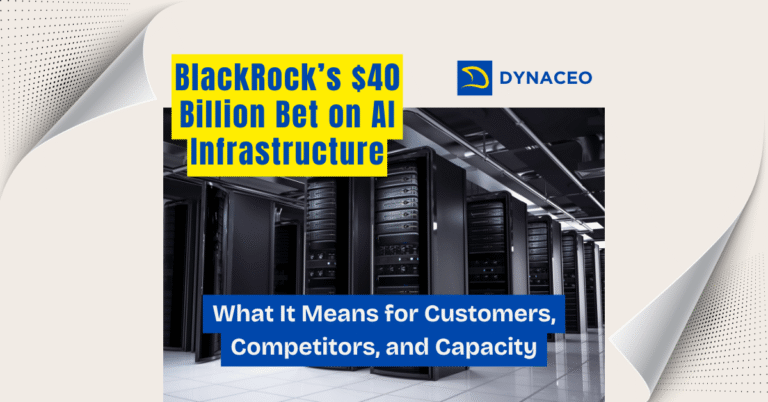Have you ever felt overwhelmed by the constant push to adopt new AI tools at work, questioning whether they truly enhance productivity or simply add to your workload? The increasing integration of artificial intelligence into our daily routines raises important questions about its role in shaping our professional and personal landscapes.
Imagine a world where your morning coffee is brewed by an AI assistant, your emails sorted by algorithms, and your daily tasks optimized for efficiency—all before you even start your day. The influence of AI tools in our lives is no longer a distant reality but a current phenomenon shaping how we work and interact.
This article will uncover the motivations behind our reliance on AI—from external pressures to personal passion—and discuss the accompanying opportunities and challenges. By reading on, you’ll equip yourself with knowledge to make informed choices in an AI-driven world. We will also delve into the driving forces behind the widespread adoption of these technologies and examine the balance of benefits and challenges they present. You’ll walk away with a clearer understanding of how to harness AI’s potential while being mindful of its pitfalls.
Contents
The AI Dilemma: Balancing Progress and Human Essence in the Age of LLMs
In the age of rapid AI advancement, particularly with Large Language Models (LLMs), we find ourselves grappling with profound questions about human identity and creativity. Are these powerful AI tools inadvertently homogenizing human expression, making us all sound alike? There’s a growing concern that in our rush to adopt AI, we may be sacrificing our originality and unique perspectives. This leads to a broader debate: are we thoughtfully integrating AI into our lives, or simply following a trend without questioning its implications? As AI capabilities expand, some worry that humans are becoming subservient to the very technology we created, potentially diminishing our intelligence and creativity in the process.
These concerns extend into the practical realm, particularly in professional settings. Many feel overwhelmed by the pressure to adopt AI tools at work, driven by demands for efficiency, competitive edge, or employer mandates. This raises important questions about the true value of AI in enhancing productivity versus potentially adding to our workload or replacing human skills. There’s a delicate balance to strike between leveraging AI’s benefits and maintaining essential human capabilities. The risk of over-reliance on AI leading to skill atrophy, reduced creativity, and critical thinking is a significant concern. Additionally, the specter of job displacement looms large as AI capabilities continue to expand.
Ethical considerations also come to the forefront. How do we ensure proper human oversight in AI-assisted work? What’s the right balance between AI efficiency and human judgment? As we navigate this new landscape, the challenge lies in harnessing AI’s potential while preserving and nurturing uniquely human traits and abilities. This necessitates a thoughtful approach to AI integration, emphasizing continuous learning and adaptation to work alongside AI effectively.
As we are realizing we are in an era where artificial intelligence is rapidly reshaping the business landscape, leaders and decision-makers face a critical juncture. At DYNACEO, we understand the complexities of navigating this AI-driven world. The ubiquity of AI tools in our professional and personal lives—from AI assistants brewing our morning coffee to algorithms optimizing our workday—presents both unprecedented opportunities and unique challenges.
As business leaders, you may find yourselves grappling with questions about the true value of AI adoption. Does it genuinely enhance productivity, or does it simply add another layer of complexity to your already demanding roles? The pressure to integrate AI, whether from competitive forces, efficiency demands, or genuine passion for innovation, is reshaping how we approach decision-making and strategy formulation.
As we navigate through this article, we’ll explore the multifaceted impact of AI on business leadership, uncovering the motivations behind its widespread adoption and the delicate balance between its benefits and potential pitfalls. Our goal is to equip you with the insights needed to make informed choices in leveraging AI’s potential while preserving the irreplaceable aspects of human intelligence and creativity that drive true innovation and leadership.
Large Language Models (LLMs) and AI tools have not made humans dumb, monotonous, or devoid of originality. While these technologies have significantly impacted various aspects of our lives, they have not erased human creativity or individuality.
Human Creativity and AI
Human creativity remains distinct from AI-generated content. Our creativity stems from emotions, experiences, and imagination, producing unique perspectives that AI cannot replicate. AI-generated content often lacks the emotional depth and authenticity characteristic of human creativity.
AI as an Augmentation Tool
Rather than replacing human creativity, AI serves as a tool to enhance and augment it. For example:
- Artists can use AI-generated images as starting points for their creations
- Writers can leverage AI-generated text to spark new ideas
This collaboration between human creativity and AI can lead to novel forms of content creation.
Cognitive Advantages of Humans
Despite AI’s impressive capabilities, the human mind still excels in various areas:
- Abstract thinking
- Flexibility
- Creativity
- Levels of reasoning
The brain’s deep neurological structures related to memory, values, movement patterns, and sensory perception give humans an edge over AI systems in many tasks.
Challenges and Considerations
While AI does not make all humans sound the same, it does present challenges:
- Decision-making: AI may gradually limit and replace human roles in decision-making processes.
- Laziness: Overreliance on AI could potentially lead to reduced mental effort and professional skills degradation.
- Privacy and security: The increasing use of AI raises concerns about personal data protection.
Maintaining Human Originality
To preserve human originality and creativity in the age of AI:
- Use AI as a tool to enhance creativity, not replace it
- Cultivate critical thinking and emotional intelligence
- Embrace the unique human ability to connect ideas with emotions and personal experiences
- Continuously learn and adapt to new technologies while maintaining a balance with traditional skills
By now we understand about the increasing prevalence and influence of AI tools in our daily lives and work environments. This trend does present both opportunities and challenges that we need to carefully consider.
Reasons for Increased AI Reliance
- Efficiency and Speed: AI tools often complete tasks faster than humans, making them attractive in time-sensitive environments.
- Cost-effectiveness: For many businesses, AI can reduce labor costs and increase productivity.
- Competitive Pressure: Companies may feel compelled to adopt AI to keep up with competitors.
- Accuracy: In certain tasks, AI can produce more consistent and error-free results than humans.
- Scalability: AI systems can often handle larger volumes of work than human teams.
Potential Consequences
- Skill Atrophy: Overreliance on AI could lead to the degradation of certain human skills.
- Job Displacement: Some roles may become obsolete as AI takes over certain tasks.
- Reduced Creativity: In some fields, there’s a risk of defaulting to AI-generated solutions rather than novel human ideas.
- Homogenization: Widespread use of similar AI tools could lead to more uniform outputs across industries.
Maintaining Balance
Despite these trends, it’s crucial to maintain a balance:
- Critical Thinking: Emphasize the importance of human oversight and judgment in AI-assisted work.
- Ethical Considerations: Humans must guide the ethical use of AI, something AI itself cannot do.
- Emotional Intelligence: Cultivate uniquely human skills like empathy and emotional understanding.
- Creativity and Innovation: Encourage original thinking and problem-solving that goes beyond AI capabilities.
- Continuous Learning: Adapt to work alongside AI, focusing on tasks that require human insight.
While the trend towards AI usage is strong, it’s important to remember that AI is a tool created to serve human needs and goals. The challenge lies in harnessing its benefits while preserving the irreplaceable aspects of human intelligence and creativity.
Conclusion
As we navigate the AI-enhanced business landscape, it’s clear that the integration of artificial intelligence into our professional lives is not just inevitable—it’s already here. However, the path forward for business leaders is not about blind adoption or resistance, but about strategic integration and thoughtful application.
At DYNACEO, we believe that the most successful leaders will be those who can harness the power of AI while maintaining the uniquely human elements that drive innovation, empathy, and ethical decision-making. The key lies in viewing AI not as a replacement for human intelligence, but as a powerful tool to augment our capabilities and free us to focus on higher-level strategic thinking and creative problem-solving.
As you move forward in your leadership journey, we encourage you to:
- Embrace AI as a tool for enhancement, not replacement
- Cultivate critical thinking and emotional intelligence within your teams
- Prioritize continuous learning and adaptability
- Balance technological adoption with the preservation of core human skills
By doing so, you’ll be well-positioned to lead your organizations into a future where AI and human intelligence work in harmony, driving unprecedented growth and innovation. Remember, the goal is not to compete with AI, but to leverage it in ways that amplify our uniquely human strengths. At DYNACEO, we’re committed to supporting you every step of the way on this exciting journey of AI-enhanced leadership.








